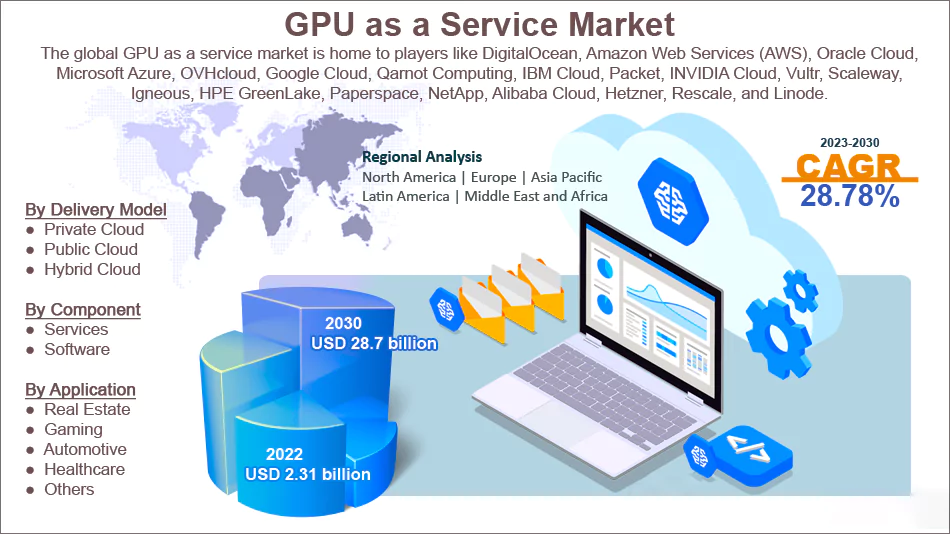Context
Krutrim, India’s Indigenous artificial intelligence startup has introduced graphics processing unit as-a-service (GPUaaS) for enterprises and developers to train their AI systems.
About Graphics Processing Unit GPU
A Graphics Processing Unit (GPU) was simply a small part of the central processing unit (CPU) within computers which was used exclusively for graphics and video rendering initially.
- They are an important part of computing hardware enabling quicker processing.
- Application:
- Machine learning and deep learning: GPUs can significantly speed up the training of complex models on large datasets, enabling data scientists to repeat more quickly and improve model accuracy.
- Data processing and analytics: Many big data processing tasks, like sorting or filtering, can benefit from parallel computing capabilities offered by GPUs, allowing organizations to process vast amounts of data more efficiently.
- High-performance computing (HPC): Scientific simulations, financial modeling, and other computationally intensive workloads can utilize GPU acceleration to decrease time-to-solution.
- Gaming and virtual reality: Cloud-based gaming services often depend on powerful GPUs for high-quality, real-time graphics rendering, providing an immersive experience.

Enroll now for UPSC Online Course
GPU As A Service (GPUaaS)
GPU As A Service (GPUaaS) is a computing service that allows businesses to access expensive GPUs for high-performance computing via the cloud without the need for installing or managing the expensive hardware in-house. It is essentially the SaaS deployment model for GPUs.
- Evolution: The concept of GPUaaS was originally developed for cryptocurrency mining with BitcoinTalk releasing the first publicly available GPU mining software in 2010.
- GPU was gaining popularity in the niche industries of gaming, virtual reality and augmented reality to support the compute-heavy workloads.
- How GPUaaS work?:
- GPUaaS simply connects businesses to remote GPU servers managed by service providers through a fully managed IT infrastructure.
- A service provider manages the remote servers that host the GPUs and makes them accessible to businesses based on their demand.
- These remote servers can store, manage and process data without the need of any on-premises deployment.
- Scope: The GPUaaS market had a valuation of USD 5 billion in 2022 and is expected to grow at a CAGR of 30% from 2023, reaching a valuation of more than USD 8 billion by 2032.
- As the processing capabilities of GPUs grow the demand for GPUaaS will also rise as GPUs are key to implement future projects based on GenAI, machine learning, etc such as smart cities and energy-efficient buildings to provide real-time metrics and predictive analytics features.
-
Advantages of using GPU As A Service (GPUaaS):
- The Infrastructure problem: With GPUaaS, the service provider manages the entire infrastructure, freeing business and individual users to manage, updating or installing any hardware or software. They can now simply access and use the GPUs on demand.
- Robust Scalability: Businesses with data-driven compute-heavy processes can effortlessly meet their GPU demands based on project requirements to scale without any hassles.
- Flexible Payments: GPUaaS is based on a pay-per-use model which enables organizations to pay only for the resources they use, reducing overall expenses and eliminating the need to procure and maintain expensive GPU infrastructure in-house.
- Data Security: Cloud-based GPU providers deploy robust security measures to ensure sensitive information processed on their GPUs is encrypted and protected from cyber-attacks.
- Quicker Time-to-market: GPUaaS allows businesses to rapidly analyze, prototype and deploy products/services thanks to GPUs’ parallel processing capabilities.
- User-friendly interfaces: Such GPUaaS platforms typically feature intuitive web interfaces, making it simple for even non-experts to set up and manage their GPU resources.
- Collaboration: GPUaaS facilitates seamless collaboration among team members, allowing them to share workloads and access the same data sets without geographic limitations.
- This can significantly enhance productivity for MLOps teams, machine learning engineers, and data scientists working on complex projects.
Also Read: What Is SaaS – Software As A Service
![]() 12 May 2024
12 May 2024

